Which Portion Of The Mass Remains The Same In Every Celebration Of The Service
xx of the worst epidemics and pandemics in history

Some of the worst epidemics and pandemics in history have doomed whole civilizations and brought once powerful nations to their knees, killing millions. While these terrible disease outbreaks still threaten humanity, cheers to the advances in epidemiology we no longer face the same dire consequences equally our ancestors once did.
Here are twenty of the worst epidemics and pandemics in history, dating from prehistoric to modern times.
Related: Spanish Flu: The deadliest pandemic in history
1. Prehistoric epidemic: Circa 3000 B.C.

Nearly 5,000 years agone, an epidemic wiped out a prehistoric village in China. The bodies of the dead were piled inside a house that was afterwards burned downwardly. No age grouping was spared, as the skeletons of juveniles, young adults and eye-age people were institute inside the house.
The archaeological site is at present called "Hamin Mangha" and is 1 of the best-preserved prehistoric sites in northeastern Cathay. Archaeological and anthropological study indicates that the epidemic happened quickly enough that there was no time for proper burials, and the site was not inhabited again.
Before the discovery of Hamin Mangha, another prehistoric mass burial that dates to roughly the same time period was found at a site called Miaozigou, in northeastern China. Together, these discoveries suggest that an epidemic ravaged the unabridged region.
2. Plague of Athens: 430 B.C.

Around 430 B.C., not long afterward a war between Athens and Sparta began, an epidemic ravaged the people of Athens and lasted for five years. Some estimates put the death toll equally high as 100,000 people. The Greek historian Thucydides (460-400 B.C.) wrote that "people in good health were all of a sudden attacked by violent heats in the head, and redness and inflammation in the eyes, the inwards parts, such every bit the throat or tongue, becoming encarmine and emitting an unnatural and fetid breath" (translation by Richard Crawley from the book "The History of the Peloponnesian War," London Dent, 1914).
What exactly this epidemic was has long been a source of argue among scientists; a number of diseases accept been put forward as possibilities, including typhoid fever and Ebola. Many scholars believe that overcrowding acquired past the war exacerbated the epidemic. Sparta's army was stronger, forcing the Athenians to have refuge backside a series of fortifications called the "long walls" that protected their city. Despite the epidemic, the war continued on, not catastrophe until 404 B.C., when Athens was forced to capitulate to Sparta.
3. Antonine Plague: A.D. 165-180
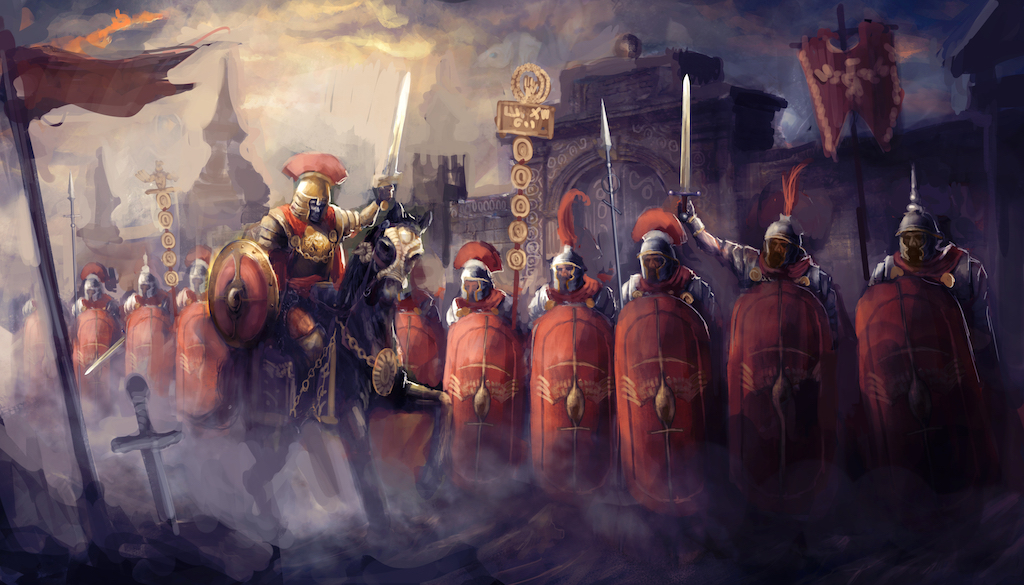
When soldiers returned to the Roman Empire from campaigning, they brought dorsum more than the spoils of victory. The Antonine Plague, which may have been smallpox, laid waste to the regular army and may have killed over v million people in the Roman empire, wrote April Pudsey, a senior lecturer in Roman History at Manchester Metropolitan Academy, in a paper published in the volume "Disability in Antiquity," Routledge, 2017).
Related: Plague doctors: Separating medical myths from facts
Many historians believe that the epidemic was first brought into the Roman Empire by soldiers returning abode subsequently a war against Parthia. The epidemic contributed to the end of the Pax Romana (the Roman Peace), a period from 27 B.C. to A.D. 180, when Rome was at the height of its ability. After A.D. 180, instability grew throughout the Roman Empire, every bit information technology experienced more than civil wars and invasions by "barbarian" groups. Christianity became increasingly popular in the fourth dimension after the plague occurred.
4. Plague of Cyprian: A.D. 250-271
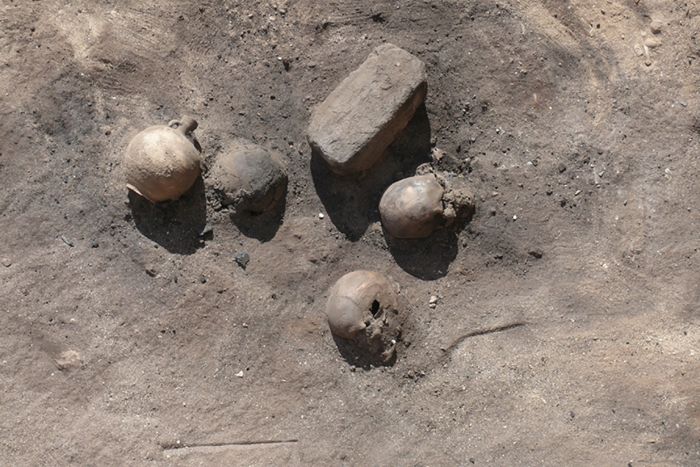
Named subsequently St. Cyprian, a bishop of Carthage (a city in Tunisia) who described the epidemic as signaling the end of the world, the Plague of Cyprian is estimated to have killed five,000 people a solar day in Rome alone. In 2014, archaeologists in Luxor plant what appears to exist a mass burying site of plague victims. Their bodies were covered with a thick layer of lime (historically used equally a disinfectant). Archaeologists found three kilns used to manufacture lime and the remains of plague victims burned in a giant bonfire.
Experts aren't sure what disease caused the epidemic. "The bowels, relaxed into a abiding flux, belch the bodily strength [and] a burn originated in the marrow ferments into wounds of the fauces (an area of the mouth)," Cyprian wrote in Latin in a work called "De mortalitate" (translation past Philip Schaff from the book "Fathers of the 3rd Century: Hippolytus, Cyprian, Caius, Novatian, Appendix," Christian Classics Ethereal Library, 1885).
v. Plague of Justinian: A.D. 541-542
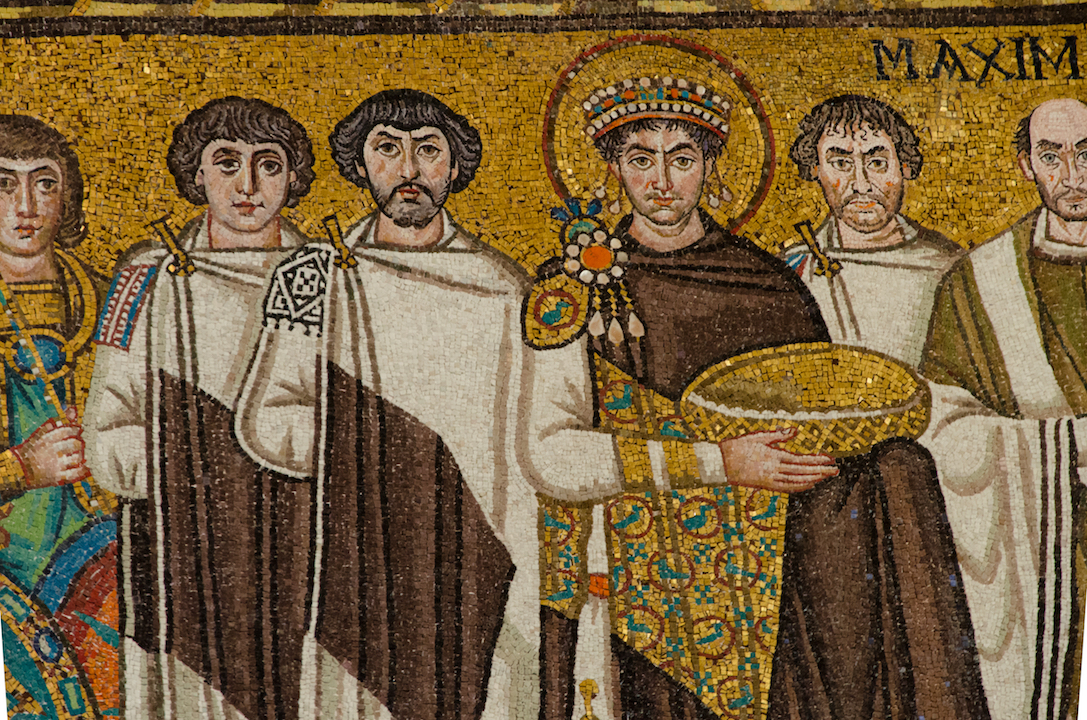
The Byzantine Empire was ravaged past the bubonic plague, which marked the start of its refuse. The plague reoccurred periodically afterward. Some estimates propose that up to 10% of the earth's population died.
The plague is named after the Byzantine Emperor Justinian (reigned A.D. 527-565). Under his reign, the Byzantine Empire reached its greatest extent, decision-making territory that stretched from the Centre East to Western Europe. Justinian constructed a keen cathedral known as Hagia Sophia ("Holy Wisdom") in Constantinople (modern-twenty-four hours Istanbul), the empire's capital letter. Justinian too got ill with the plague simply survived. All the same, his empire gradually lost territory in the time afterwards the plague struck.
6. The Blackness Death: 1346-1353
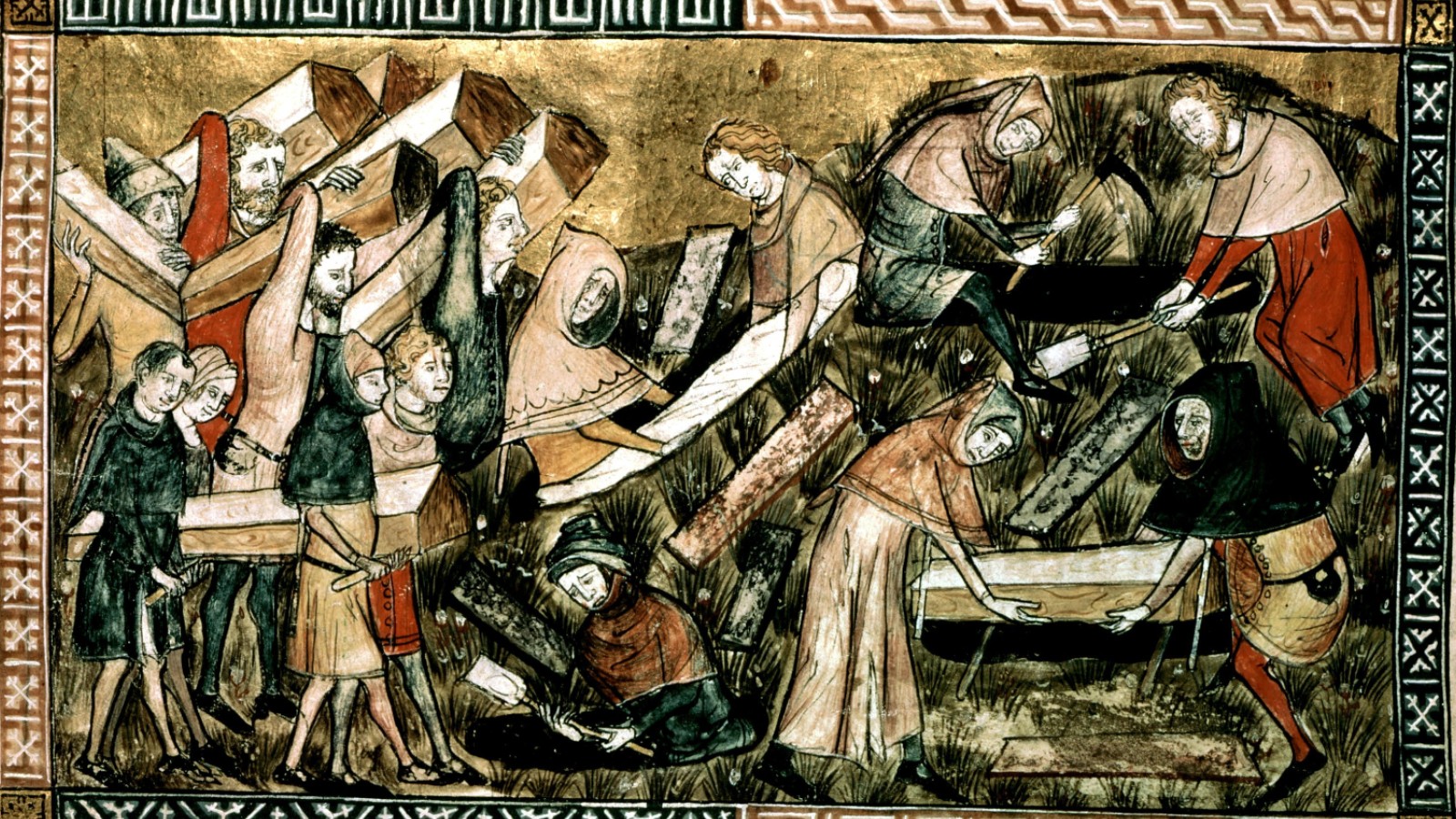
The Black Expiry traveled from Asia to Europe, leaving destruction in its wake. Some estimates propose that it wiped out over half of Europe's population. It was acquired by a strain of the bacterium Yersinia pestis that is likely extinct today and was spread past fleas on infected rodents. The bodies of victims were buried in mass graves.
The plague changed the course of Europe'southward history. With so many dead, labor became harder to notice, bringing about ameliorate pay for workers and the terminate of Europe's system of serfdom. Studies suggest that surviving workers had amend access to meat and higher-quality bread. The lack of cheap labor may likewise have contributed to technological innovation.
7. Cocoliztli epidemic: 1545-1548
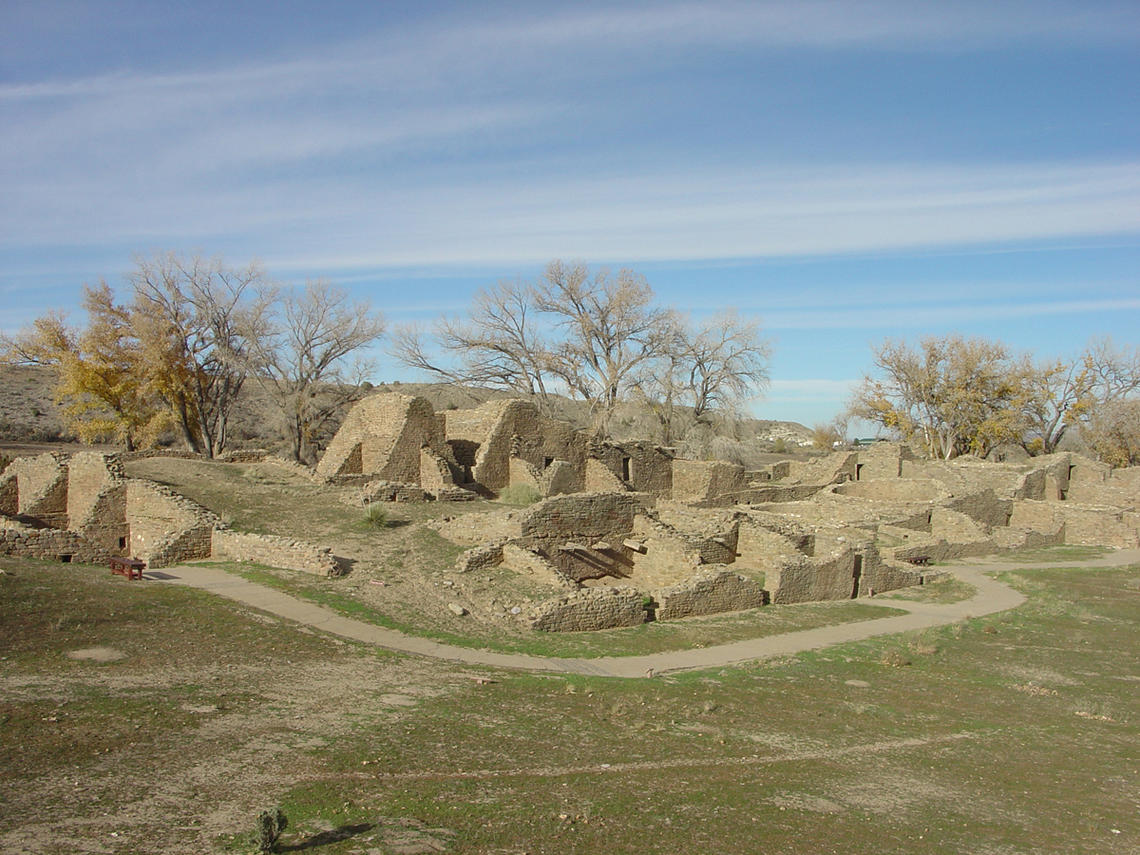
The infection that caused the cocoliztli epidemic was a form of viral hemorrhagic fever that killed fifteen million inhabitants of Mexico and Central America. Among a population already weakened past extreme drought, the disease proved to be utterly catastrophic. "Cocoliztli" is the Aztec word for "pest."
A recent written report that examined DNA from the skeletons of victims institute that they were infected with a subspecies of Salmonella known every bit South. paratyphi C, which causes enteric fever, a category of fever that includes typhoid. Enteric fever can cause loftier fever, aridity and gastrointestinal problems and is still a major wellness threat today.
8. American Plagues: 16th century
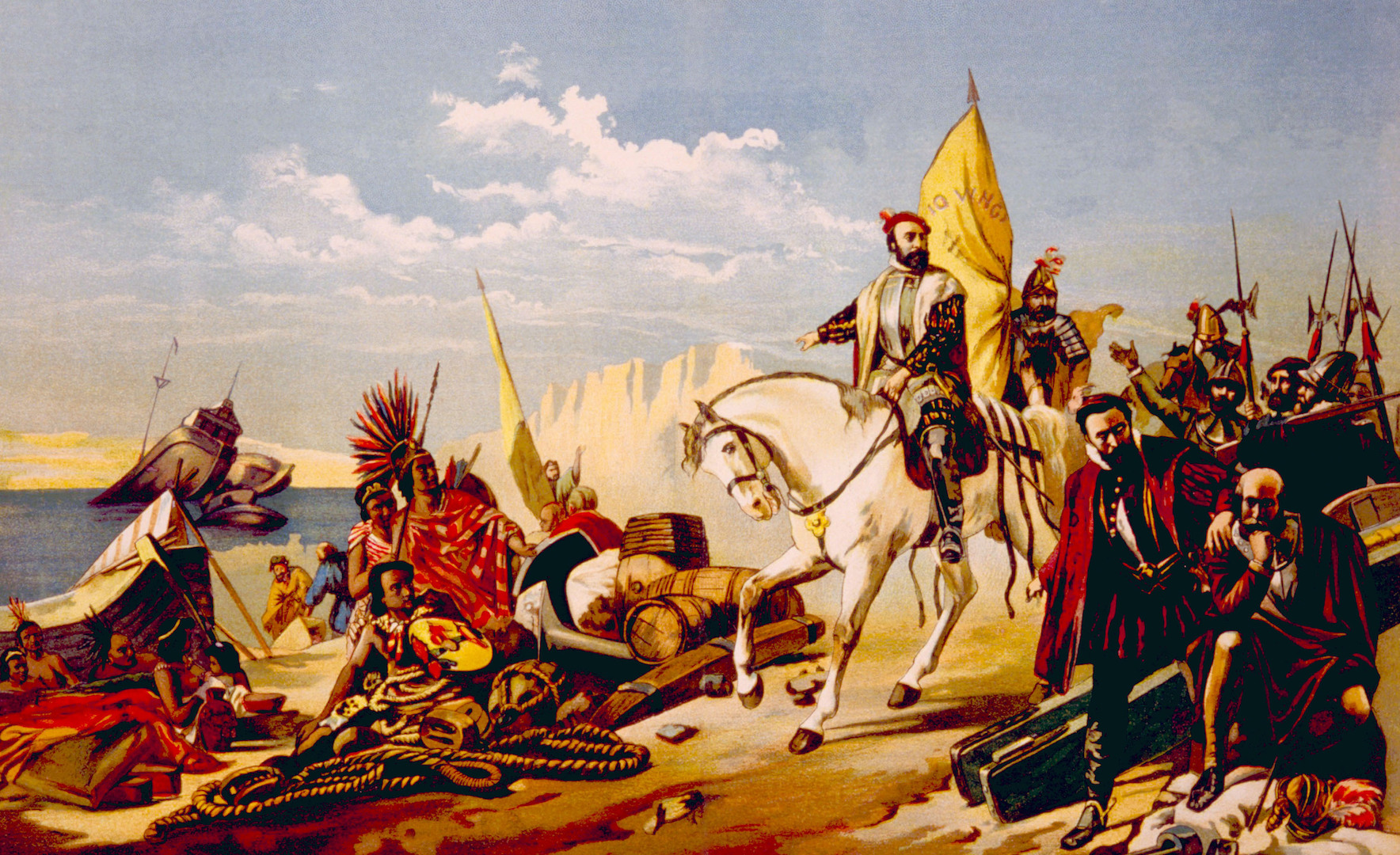
The American Plagues were a cluster of Eurasian diseases brought to the Americas by European explorers. These illnesses, including smallpox, contributed to the collapse of the Inca and Aztec civilizations. Some estimates propose that 90% of the indigenous population in the Western Hemisphere was killed off.
The diseases helped a Spanish forcefulness, led by Hernán Cortés, to conquer the Aztec capital letter of Tenochtitlán in 1519. Another Castilian forcefulness led by Francisco Pizarro conquered the Incas in 1532. The Castilian took over the territories of both empires. In both cases, the Aztec and Incan armies had been ravaged by disease and were unable to withstand the Spanish forces.
When people from Britain, France, Portugal and the Netherlands began exploring, conquering and settling the Western Hemisphere, they were helped past the fact that disease had vastly reduced the size of whatsoever indigenous groups that opposed them.
nine. Smashing Plague of London: 1665-1666

The Black Death'southward last major outbreak in Great Great britain caused a mass exodus from London, led by King Charles II. The plague started in Apr 1665 and spread rapidly through the hot summertime months. Fleas from plague-infected rodents were i of the main causes of transmission.
By the time the plague ended, about 100,000 people, including 15% of the population of London, had died. Nevertheless, this was non the end of that metropolis'southward suffering. On Sept. ii, 1666, the Great Fire of London started, lasting for four days and burning down a large portion of the urban center.
x. Groovy Plague of Marseille: 1720-1723
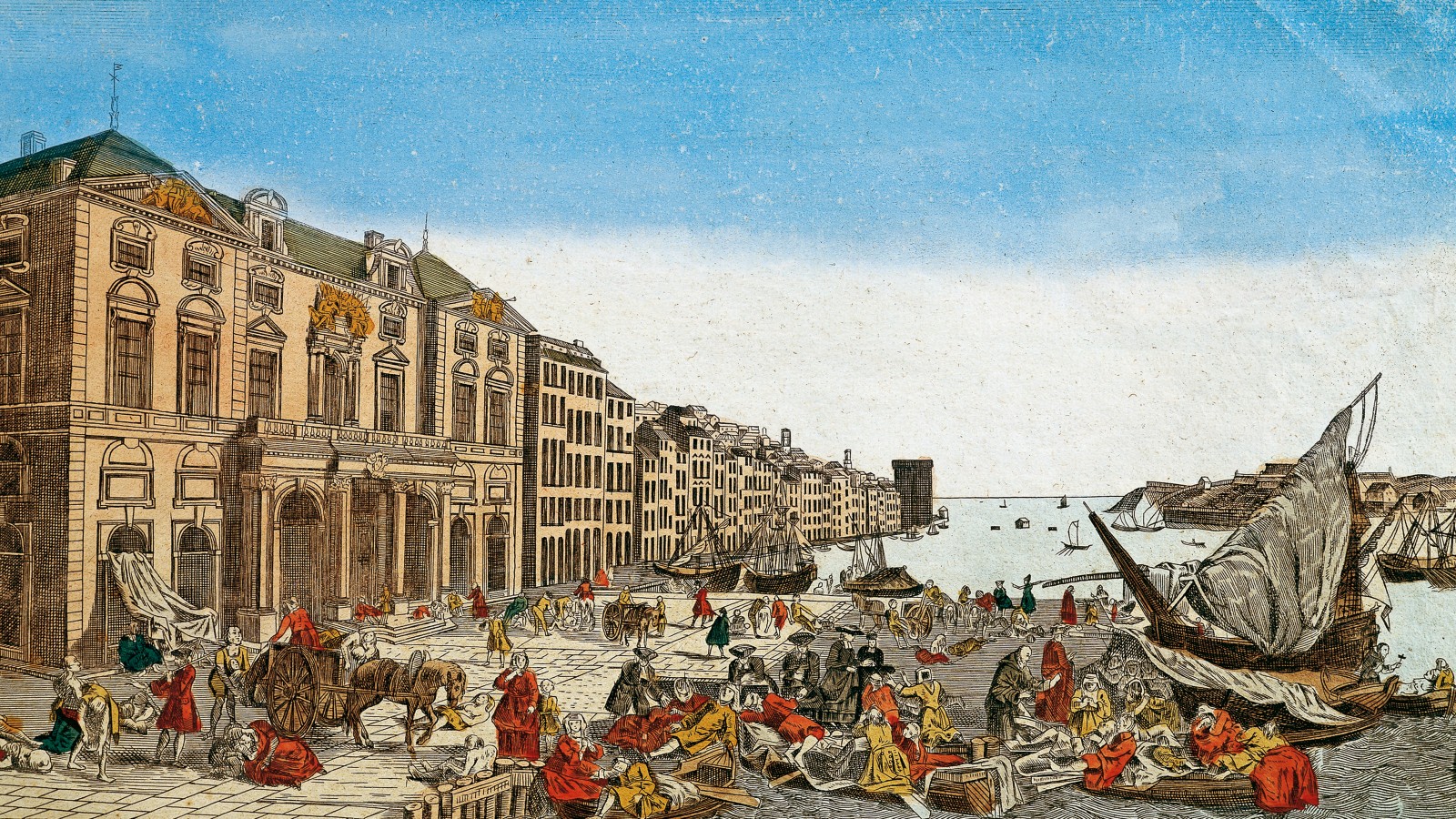
Historical records say that the Corking Plague of Marseille started when a ship called "Yard-Saint-Antoine" docked in Marseille, France, carrying a cargo of goods from the eastern Mediterranean. Although the ship was quarantined, plague still got into the city, likely through fleas on plague-infected rodents.
Plague spread quickly and, over the next 3 years, as many as 100,000 people may have died in Marseille and surrounding areas. It's estimated that upwards to 30% of the population of Marseille may have perished.
11. Russian plague: 1770-1772

In plague-ravaged Moscow, the terror of quarantined citizens erupted into violence. Riots spread through the city and culminated in the murder of Archbishop Ambrosius, who was encouraging crowds not to gather for worship.
The empress of Russia, Catherine II (as well called Catherine the Smashing), was so desperate to incorporate the plague and restore public order that she issued a hasty decree ordering that all factories be moved from Moscow. By the time the plague ended, equally many every bit 100,000 people may take died. Even later the plague ended, Catherine struggled to restore order. In 1773, Yemelyan Pugachev, a man who claimed to be Peter Iii (Catherine's executed husband), led an coup that resulted in the deaths of thousands more.
12. Philadelphia yellowish fever epidemic: 1793
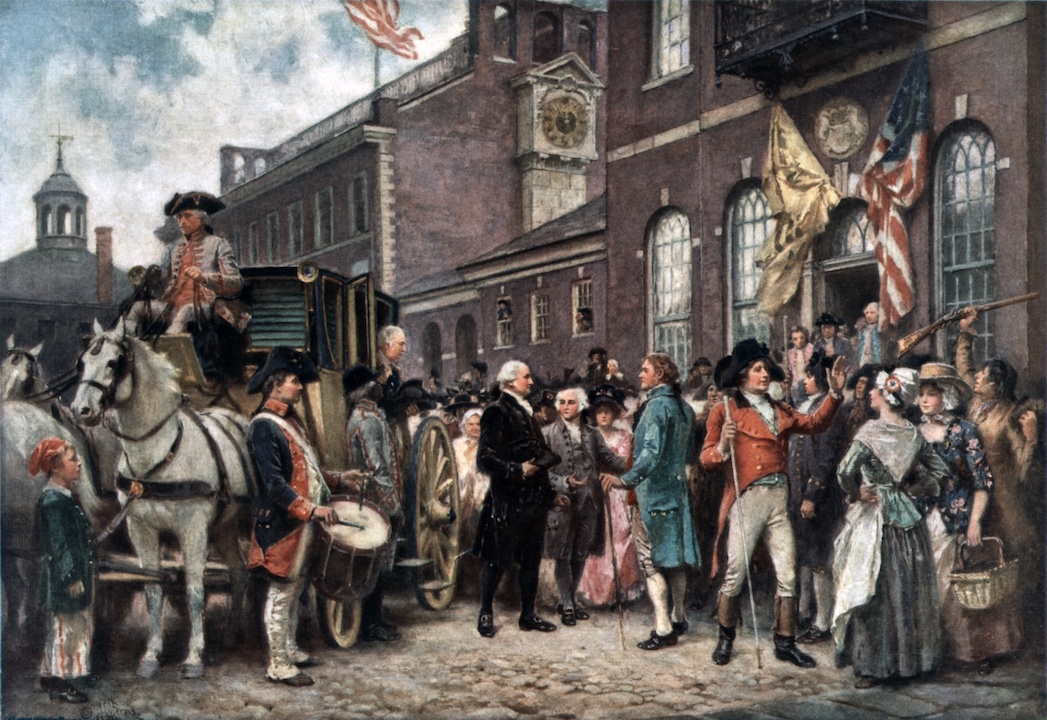
When yellow fever seized Philadelphia, the Usa' capital at the time, officials wrongly believed that slaves were immune. As a result, abolitionists called for people of African origin to be recruited to nurse the sick.
The affliction is carried and transmitted by mosquitoes, which experienced a population nail during the particularly hot and humid summer weather condition in Philadelphia that year. Information technology wasn't until winter arrived — and the mosquitoes died out — that the epidemic finally stopped. By then, more than five,000 people had died.
13. Flu pandemic: 1889-1890
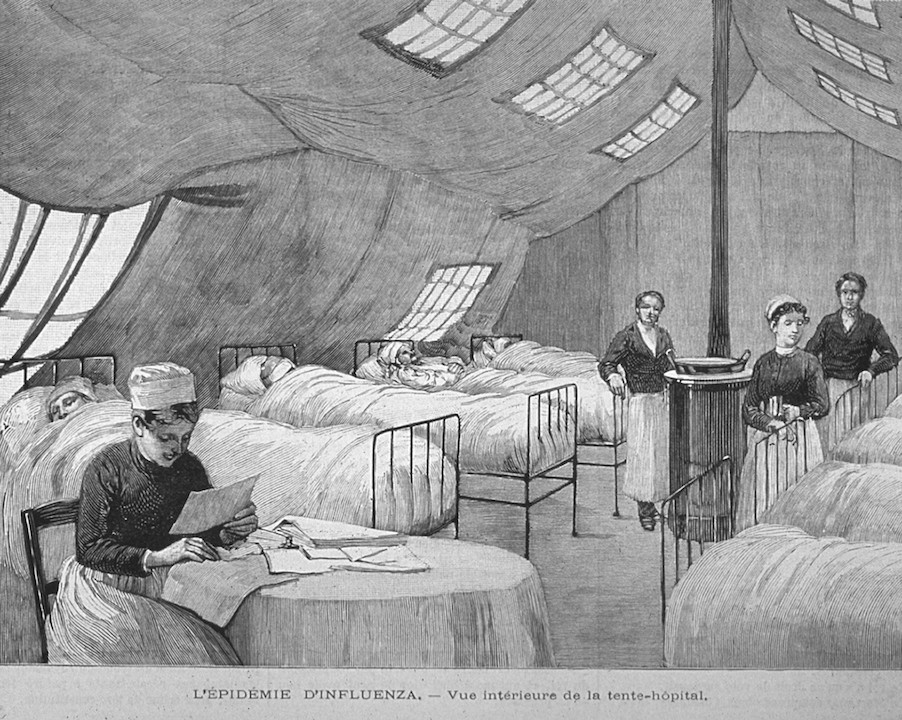
In the mod industrial age, new transport links made information technology easier for influenza viruses to wreak havoc. In but a few months, the disease spanned the globe, killing 1 1000000 people. Information technology took just 5 weeks for the epidemic to reach peak bloodshed.
The earliest cases were reported in Russia. The virus spread rapidly throughout St. Petersburg earlier information technology apace fabricated its mode throughout Europe and the rest of the world, despite the fact that air travel didn't exist yet.
14. American polio epidemic: 1916

A polio epidemic that started in New York City caused 27,000 cases and 6,000 deaths in the U.s.. The disease mainly affects children and sometimes leaves survivors with permanent disabilities.
Polio epidemics occurred sporadically in the Usa until the Salk vaccine was developed in 1954. Equally the vaccine became widely available, cases in the United States declined. The concluding polio case in the United States was reported in 1979. Worldwide vaccination efforts take greatly reduced the disease, although it is not all the same completely eradicated.
xv. Spanish Flu: 1918-1920
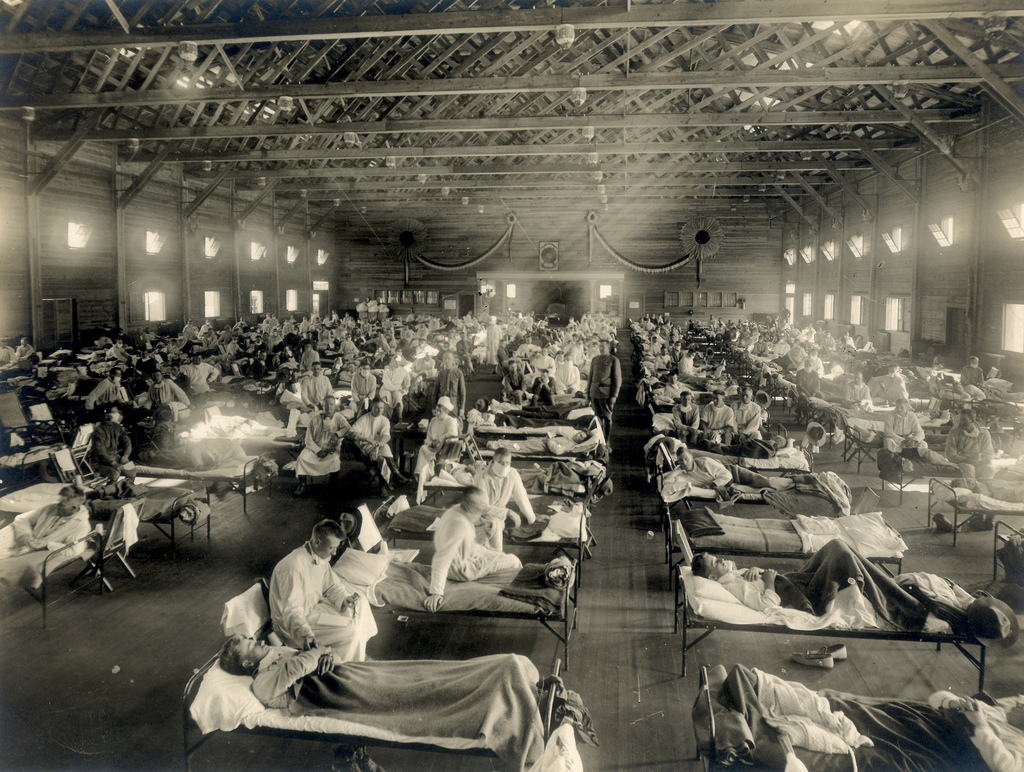
An estimated 500 1000000 people from the South Seas to the North Pole barbarous victim to Spanish Flu. One-fifth of those died, with some indigenous communities pushed to the brink of extinction. The flu's spread and lethality was enhanced by the cramped conditions of soldiers and poor wartime nutrition that many people were experiencing during World State of war I.
Despite the proper name Spanish Influenza, the illness likely did not offset in Kingdom of spain. Spain was a neutral nation during the state of war and did not enforce strict censorship of its press, which could therefore freely publish early accounts of the illness. As a result, people falsely believed the disease was specific to Spain, and the name Spanish Flu stuck.
sixteen. Asian Flu: 1957-1958

The Asian Influenza pandemic was another global showing for influenza. With its roots in China, the illness claimed more than 1 million lives. The virus that caused the pandemic was a blend of avian flu viruses.
The Centers for Illness Control and Prevention notes that the disease spread quickly and was reported in Singapore in February 1957, Hong Kong in April 1957, and the coastal cities of the Usa in the summer of 1957. The total death toll was more than 1.1 million worldwide, with 116,000 deaths occurring in the U.s.a..
17. AIDS pandemic and epidemic: 1981-nowadays day
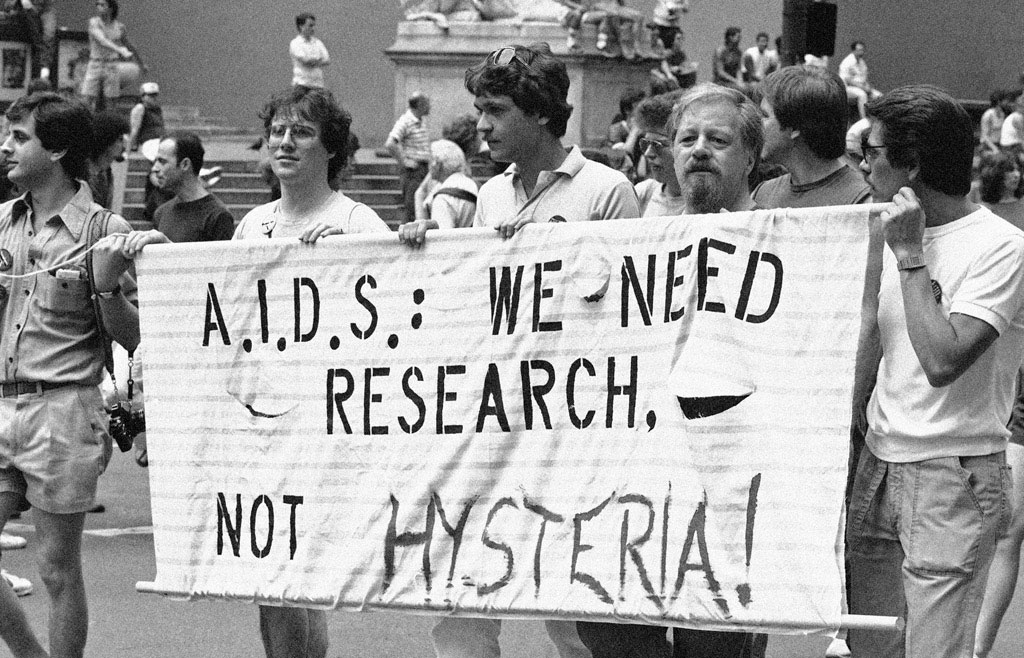
AIDS has claimed an estimated 35 one thousand thousand lives since it was first identified. HIV, which is the virus that causes AIDS, likely developed from a chimpanzee virus that transferred to humans in West Africa in the 1920s. The virus made its manner around the world, and AIDS was a pandemic by the late 20th century. At present, about 64% of the estimated forty million living with human immunodeficiency virus (HIV) live in sub-Saharan Africa.
For decades, the disease had no known cure, but medication developed in the 1990s now allows people with the affliction to experience a normal life bridge with regular treatment. Fifty-fifty more than encouraging, 2 people have been cured of HIV as of early 2020.
18. H1N1 Swine Influenza pandemic: 2009-2010
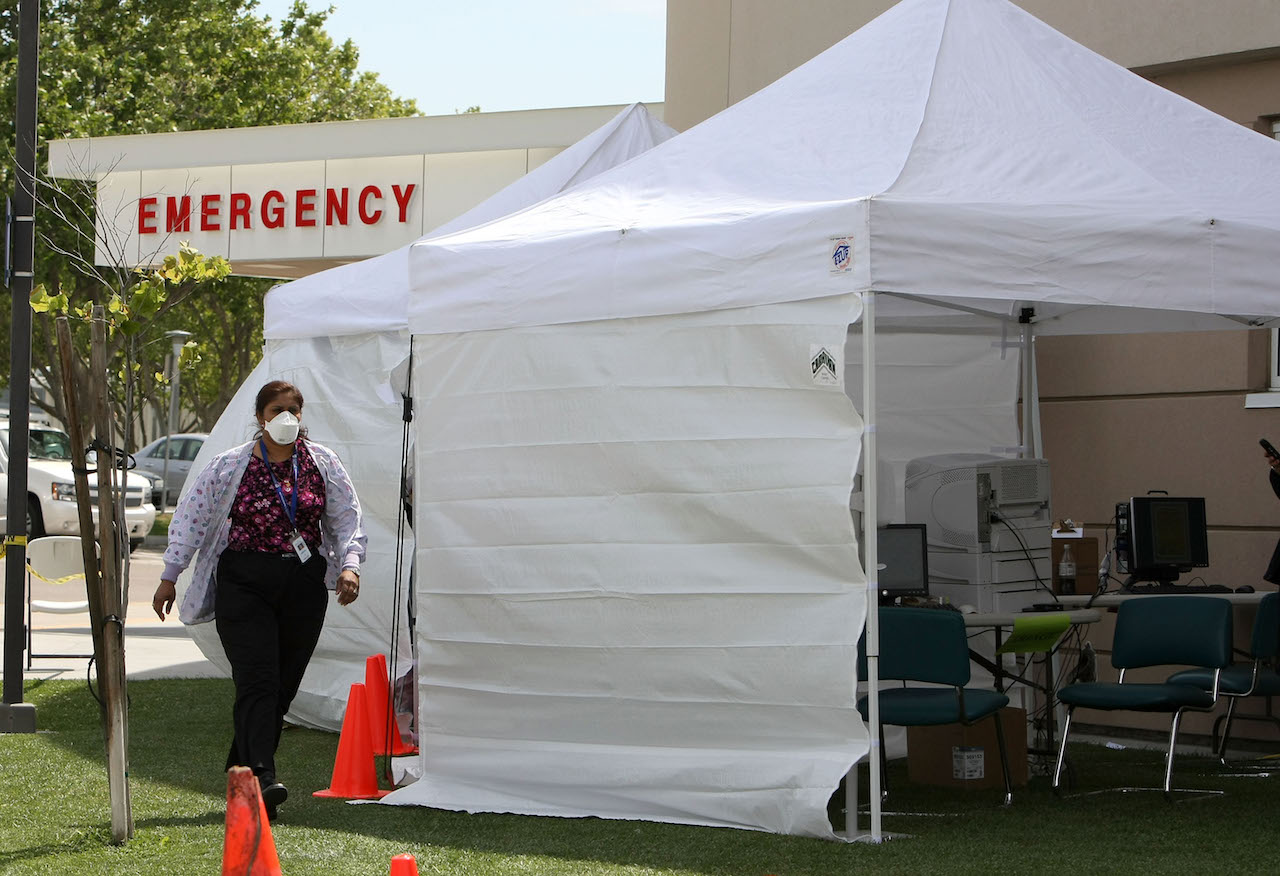
The 2009 swine flu pandemic was caused by a new strain of H1N1 that originated in Mexico in the spring of 2009 earlier spreading to the rest of the world. In one year, the virus infected as many as ane.4 billion people across the earth and killed between 151,700 and 575,400 people, according to the CDC.
The 2009 influenza pandemic primarily affected children and young adults, and fourscore% of the deaths were in people younger than 65, the CDC reported. That was unusual, considering that most strains of flu viruses, including those that cause seasonal flu, crusade the highest percentage of deaths in people ages 65 and older.
But in the case of the swine flu, older people seemed to take already built up enough immunity to the grouping of viruses that H1N1 belongs to, so weren't afflicted as much. A vaccine for the H1N1 virus that caused the swine flu is now included in the annual flu vaccine.
Related: How does the COVID-19 pandemic compare to the concluding pandemic?
19. Westward African Ebola epidemic: 2014-2016
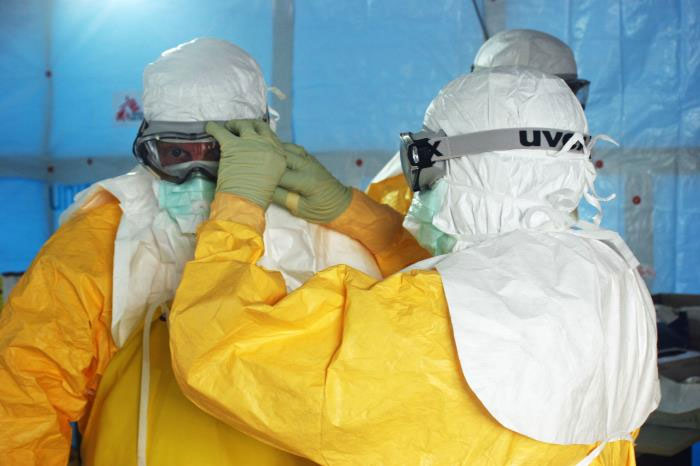
Ebola ravaged Due west Africa between 2014 and 2016, with 28,600 reported cases and 11,325 deaths. The starting time example to be reported was in Guinea in Dec 2013, then the disease quickly spread to Liberia and Sierra Leone. The majority of the cases and deaths occurred in those three countries. A smaller number of cases occurred in Nigeria, Mali, Senegal, the United States and Europe, the Centers for Disease Control and Prevention reported.
There is no cure for Ebola, although efforts at finding a vaccine are ongoing. The beginning known cases of Ebola occurred in Sudan and the Democratic Republic of Congo in 1976, and the virus may accept originated in bats.
20. Zika Virus epidemic: 2015-present day
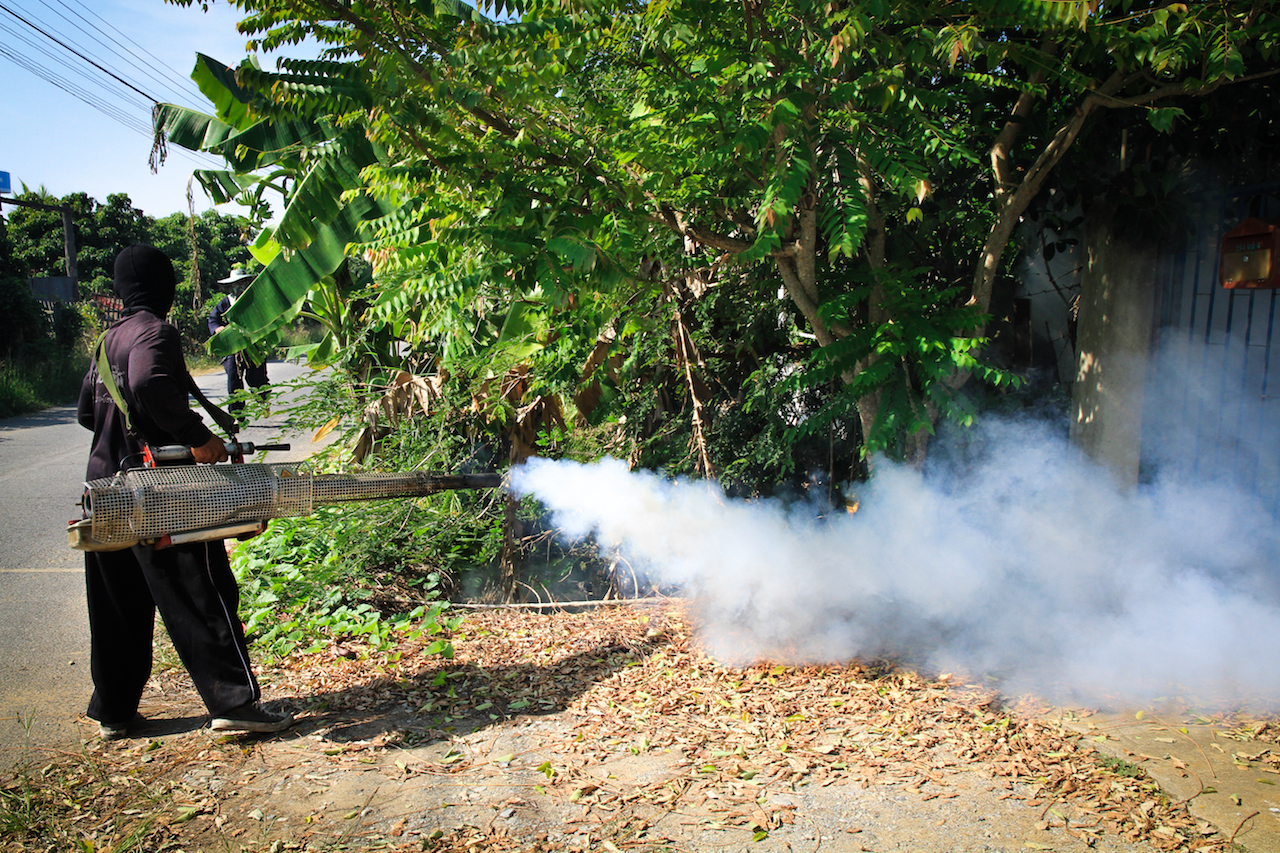
The impact of the recent Zika epidemic in S America and Primal America won't exist known for several years. In the meantime, scientists face a race confronting fourth dimension to bring the virus nether control. The Zika virus is unremarkably spread through mosquitoes of the Aedes genus, although information technology tin can also exist sexually transmitted in humans.
While Zika is unremarkably not harmful to adults or children, it can assault infants who are still in the womb and cause nascence defects. The type of mosquitoes that carry Zika flourish best in warm, humid climates, making South America, Central America and parts of the southern Usa prime number areas for the virus to flourish.
Additional resource:
- Learn what a pandemic is.
- Detect what the coronavirus outbreak can teach us near bringing samples back from Mars.
- Learn most how the spread of COVID-19 is fueled through stealth manual.

Source: https://www.livescience.com/worst-epidemics-and-pandemics-in-history.html
Posted by: andersonwhishis.blogspot.com


0 Response to "Which Portion Of The Mass Remains The Same In Every Celebration Of The Service"
Post a Comment